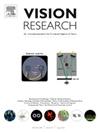阿托品在离体实验鸡近视模型中恢复视网膜谷氨酸/ γ-氨基丁酸水平
IF 1.4
4区 心理学
Q4 NEUROSCIENCES
引用次数: 0
摘要
阿托品被广泛用于减缓儿童近视的进展,但其作用机制仍然知之甚少。本研究探讨了阿托品对小鸡形态剥夺性近视(FDM)模型视网膜神经化学的影响。用单眼FDM诱导雏鸡近视。分别取FDM和对侧正常眼视网膜去核、切开,每组6个视网膜样本在1.8 mM阿托品或正常生理缓冲液中体外培养60 min。样品用戊二醛固定,用银强化免疫金标记法检测神经递质。在另一个实验中,重复FDM和正常眼睛的孵育过程,并将组织固定在甲醛中,使用酪氨酸羟化酶(TH)免疫荧光检测多巴胺能神经元。各组间TH免疫标记无明显变化。然而,与对照组相比,近视降低了43%的谷氨酸水平,改变了视网膜内谷氨酸的分布。近视眼的双极细胞中谷氨酰胺水平也下降了57%。在60分钟内,阿托品治疗使谷氨酸和谷氨酰胺水平恢复到正常水平。gamma氨基丁酸(GABA)最显著的变化是在正常和近视视网膜的外丛状层(OPL)中观察到62%的减少。在阿托品治疗后,OPL和水平细胞中的GABA水平进一步下降。这些发现表明,阿托品治疗的一个直接效果是恢复近视中被破坏的神经递质的平衡,提高谷氨酸水平,同时降低GABA。这种神经递质调节可能有助于阿托品控制近视的治疗效果。本文章由计算机程序翻译,如有差异,请以英文原文为准。

Atropine restores retinal glutamate / γ-aminobutyric acid levels in vitro in an experimental chick model of myopia
Atropine is widely used to slow childhood myopia progression, but its mechanisms of action remain poorly understood. This study investigated atropine’s effects on retinal neurochemistry in a chick model of form-deprivation myopia (FDM). Myopia was induced in chicks via monocular FDM. Retinas from FDM and contralateral normal eyes were enucleated, bisected and six retinal samples per group were incubated for 60 min in vitro in either 1.8 mM atropine or normal physiological buffer. Samples were fixed in glutaraldehyde for neurotransmitter detection using silver-intensified immunogold labelling. In a separate experiment, the incubation procedure of FDM and normal eyes was repeated and tissues were fixed in formaldehyde to examine dopaminergic neurons using tyrosine hydroxylase (TH) immunofluorescence.
No significant changes in TH immunolabelling were observed between groups. However, myopia reduced glutamate levels by 43% compared to controls, with altered glutamate distribution in the inner retina. Bipolar cells in myopic eyes also showed a 57% decrease in glutamine levels. Within 60 min, atropine treatment restored both glutamate and glutamine levels toward normal levels. The most noteworthy changes to gamma aminobutyric acid (GABA) was a 62% reduction observed in the outer plexiform layer (OPL) between normal and myopic retinas. Following atropine treatment, there was a further decrease in (GABA) levels in OPL and horizontal cells.
These findings suggest that one immediate effect of atropine treatment is to restore the balance of neurotransmitters that are disrupted in myopia, elevating glutamate while reducing GABA. This neurotransmitter modulation may contribute to atropine’s therapeutic effects in myopia control.
求助全文
通过发布文献求助,成功后即可免费获取论文全文。
去求助
来源期刊

Vision Research
医学-神经科学
CiteScore
3.70
自引率
16.70%
发文量
111
审稿时长
66 days
期刊介绍:
Vision Research is a journal devoted to the functional aspects of human, vertebrate and invertebrate vision and publishes experimental and observational studies, reviews, and theoretical and computational analyses. Vision Research also publishes clinical studies relevant to normal visual function and basic research relevant to visual dysfunction or its clinical investigation. Functional aspects of vision is interpreted broadly, ranging from molecular and cellular function to perception and behavior. Detailed descriptions are encouraged but enough introductory background should be included for non-specialists. Theoretical and computational papers should give a sense of order to the facts or point to new verifiable observations. Papers dealing with questions in the history of vision science should stress the development of ideas in the field.
 求助内容:
求助内容: 应助结果提醒方式:
应助结果提醒方式:


